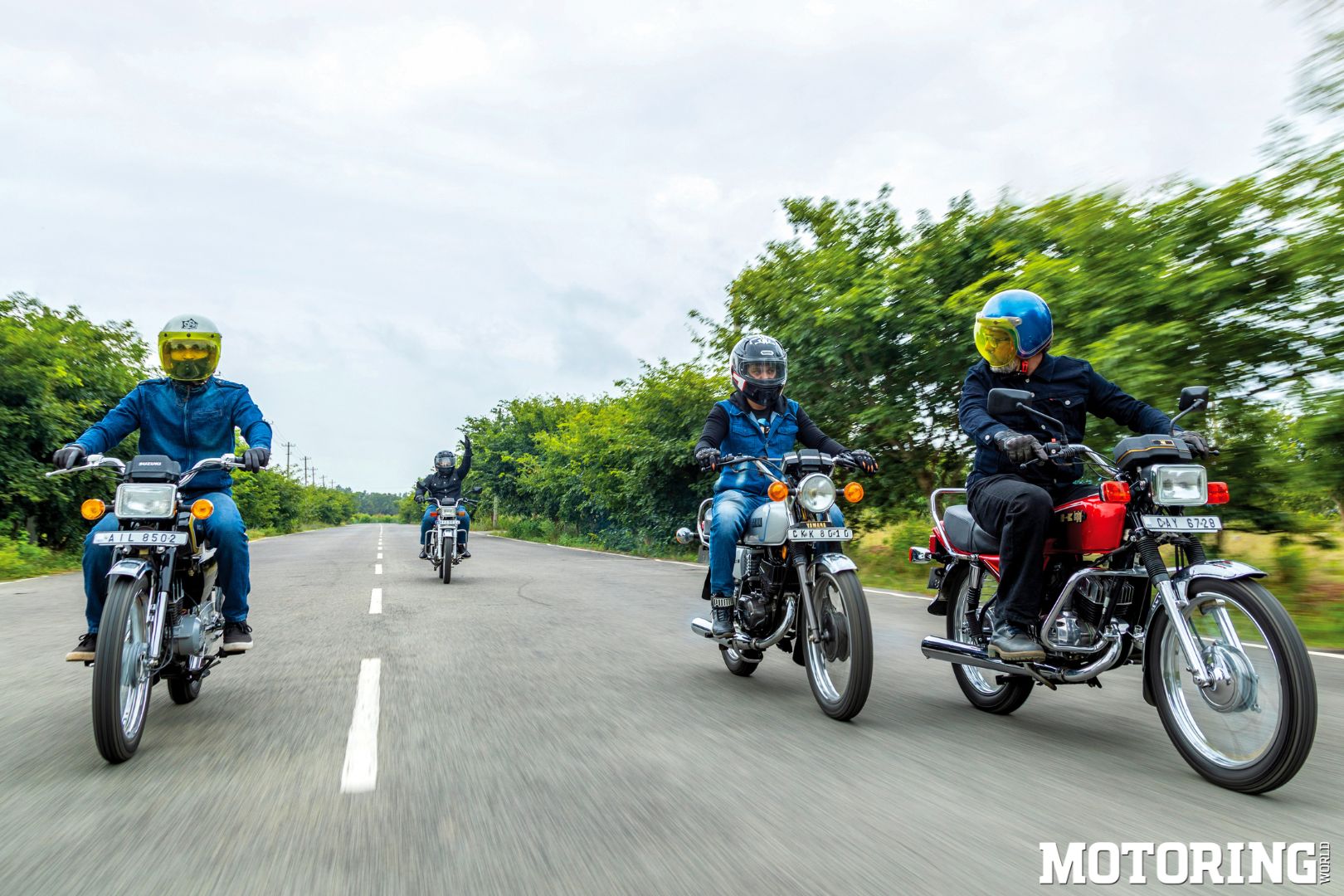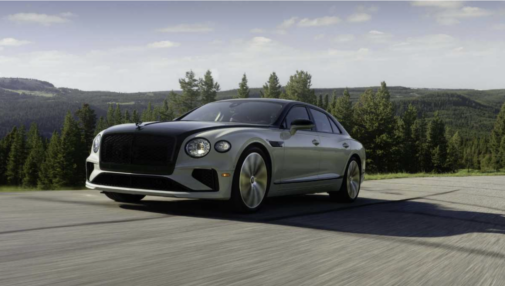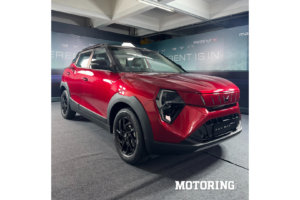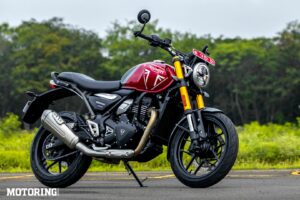This one’s been a long time coming. I’ve been trying to assemble this quartet for as long as I can remember; first for my garage, and then for this story. How could I not? This is the coolest sepia-toned parking lot of my childhood, and watching it vividly come to life on a brisk Bangalore morning was quite the skinny-tyred slide down memory lane. I used to look up to these motorcycles from the seat of my Avon bicycle, occasionally clambering up on one to see how frustratingly far my feet were from the ground. Everyone seemed to have motorcycles, and mostly these four — the IND-Suzuki AX 100, the Yamaha RX 100, the Kawasaki-Bajaj KB 100 and the Hero Honda CD 100. And I did not like the CD 100. It was the AX that arrived first in 1984, opening pre-economic liberalisation eyes to the benefits of a light, nimble, reliable and economical motorcycle. The RX screamed onto the idyllic scene in 1985, and blew the wig off many an uncle’s head. In the same year, the CD puttered in, promising to save everyone tens of Rupees (this was a big deal back then, mind you) every month. And then came the KB, morphing from a cheetah on our flickering TV screen. It was immediately my favourite, and then my neighbour bought one. I’d never hated my dad’s archaic Bullet more.
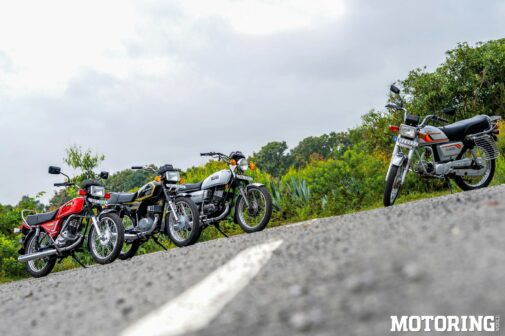
The names of these motorcycles probably sound like they were trying to teach Indians the English alphabet. Their combustion chambers all measured in at 100cc; if you’ve had a decent swig of any worthy liquid, you’ve already downed more than the combined cubic capacity of this quad. I used to climb trees, walls, roofs and fences, and then sit there looking down at these bikes, various quantities of them parked in the building compound. There was always more of the RX, and the CD nearly matched its numbers, but there weren’t a lot of KBs and AXs around. Perhaps Bombay of the ’90s preferred extremes. Nonetheless, in this instance many years later, I couldn’t help but look at all of them with a fondness that only terminal-stage nostalgia brings about.
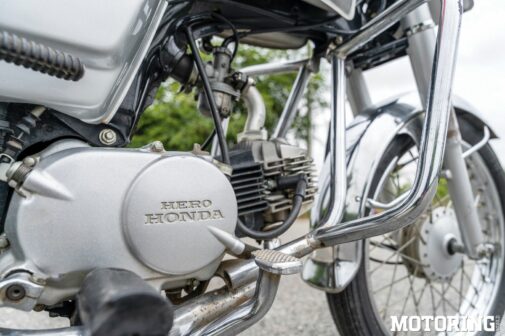
That was quickly swatted away, though, when the three two-strokes showed up together at a petrol pump causing all kinds of chaos. People complained loudly at the time they took to fill up, sachets of 2T oil requiring additional labour, calculation and time to fetch and pour into tanks; the petrol pump attendants passing around a funnel while performing verbal mathematics would’ve been hilarious if not for the local chap on his scooter behind hurling expletives at us. Meanwhile, the CD tanked up and pottered away before anyone noticed. Right there, in its two-stroke competition’s faces, was the famous ‘Fill it. Shut it. Forget it.’ tag in real-life action. However, it didn’t take long for the trio to catch up with their once-executioner. I like to think that the CD killed off the other three, but there was always obviously more to it than that. The CD was only the mask that the actual killer (emission norms) wore. It was a matter of propriety and friendliness, too; the others smoked, the CD didn’t and the other three happened to be around at a time when the Industrial Revolution’s connection with smoke was increasingly frowned upon. There was also the capitalist convenience of four-strokes carrying more moving parts to eventually sell. How much of Hero’s abundant fortune in India was built on spare parts sales?
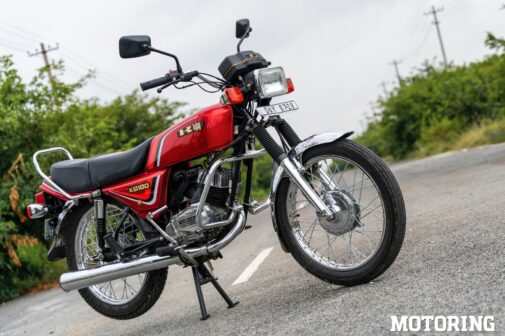
However, let’s finally counter-steer away from that rabbit hole and towards these bikes now. Seeing as I’d been looking for a KB myself (a brand-new block-piston set still sits in my cupboard), I was naturally drawn to this shiny red example. Also the fact that I already had a mint RX sitting pretty in my garage, and the one that showed up for the shoot was a frumpy one, as most RXes tend to be these days. Back in the day, I thought the RX was for everyone who wanted to look cool, the KB was for those who knew what they wanted, and the AX was for those who couldn’t quit smoking but wanted economy at the same time. The CD, of course, was for tedious people who knew nothing of fun. Even starting the CD felt suitably flaccid, with my foot swinging down into what has to be kick-start purgatory. Then there was that all-up gear-shift pattern that made millions of Indians use their heels instead of their heads. Even the KB and the AX went the simple-shift way, with uni -directional changes to make it easy for a country full of first-time riders. And that’s why I believe the RX was immediately more engaging, with its now-normal one-down and everything-else-up shifts. As a motorcycle should, it kept riders on their toes.
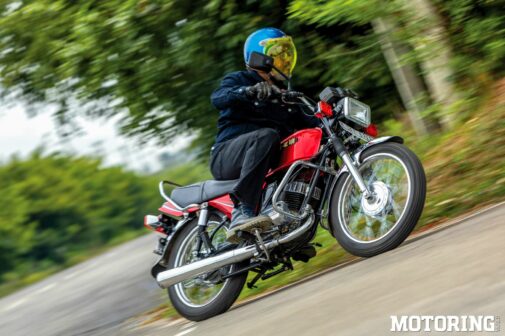
The same could also be said of these bikes’ tyres. With widths barely exceeding my forearms’, these basic hoops of rubber never inspired any great confidence, in addition to the fact that these were all borrowed motorcycles. Nonetheless, the KB’s famed long-wheelbase stability was reassuring enough to try cornering shots, and with each attempt lean angles kept on increasing until prudent thoughts finally prevailed.
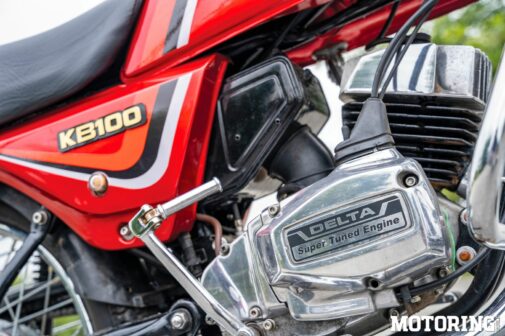
It sounded awesome, too, with its 99.7cc 10.35-bhp motor playing its unique tune, a bit deeper and lazier than the other two-strokes in its company. Perhaps that was down to its disc-valve intake and side-mount carb setup, but whenever I rolled on the throttle, it obliged with a typically two-stroke response, getting close to its claimed top speed of 95 kph. And that twin-pod meter setup was still a colourful masterpiece of nostalgia to behold. To me, the KB looked the best of this lot, too. The mood board for designing the KB seems to have been an empty rectangle, and it’s easy to see why, right from the tank, the tail-light cowl, the meter console and the lights. It also wasn’t as cramped as the other three, and also had more features; its ignition slot could lock the handle, it had a tachometer, a fuel gauge, an engine kill switch, and a thumb-operated choke below the left-side switchgear.
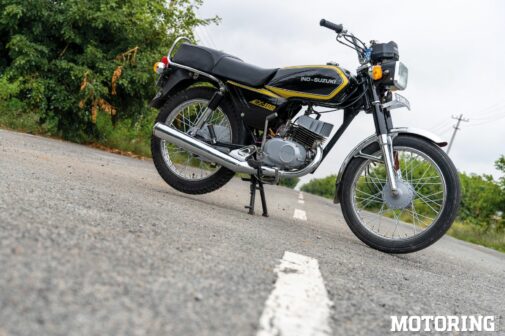
If you find yourself giggling, remember to take a look at the other three. However, the AX had some pretty cool tricks up its sleeves, too. Yes, sleeves. You see, the fully covered suspension along with the tidy tank and panels gave it a rather satisfying appearance. And its aluminium switchgear added its own tiny bit of sophistication to what was otherwise a motorcycle that was aimed to be a two-stroke four-stroke. It sounded the best of the lot to me, and the clear and crisp exhaust was very distinctive in its ring-a-ding timbre.
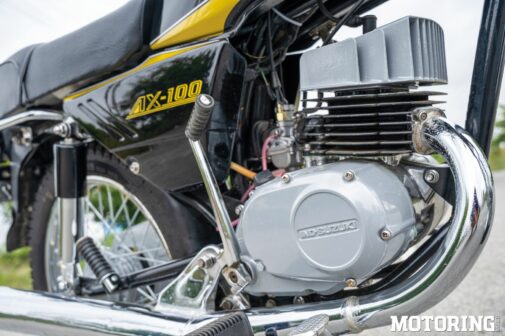
At 7.8 bhp from its 98.2cc, it was never going to keep up with the KB and the RX, and it wasn’t going to convincingly outrun the CD, either. But it’d deliver a solid 60 kpl, even when forced to sing as loudly as it could, and it was probably the most reliable one of the lot. In intent, it was the closest a two-stroke could get to the CD. In spirit, it was a proper Suzuki. Even in the AX you see here, the stereotype of a slick Suzuki gearbox held true. I really don’t know why everyone else doesn’t simply open up one of those and ‘borrow’ the design for their own bikes. And the rest of the bike felt as light and slick as the toe-shifted ’box, too. The AX felt as light as the wisps of smoke it exhaled from its exhaust, and became increasingly cheerful as it went along. Next to the CD, it felt entertainingly alive, and it didn’t matter that the KB and the RX were long gone. At least I could blow smoking raspberries at the CD via the AX’s light throttle. The little joys of life, I tell you.
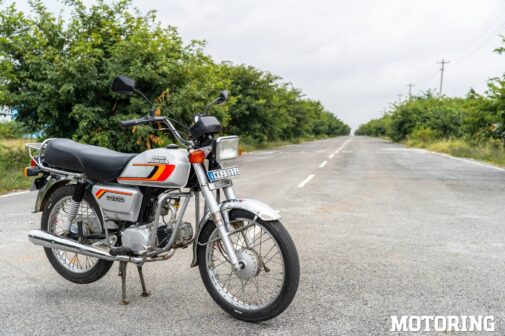
Now, chances of finding a CD 100 high up and deep into any Indian rider’s family tree are overwhelmingly high. Its inoffensive nature attracted people in an era hungover on socialism that saw diffidence as the only acceptable way of conduct. Or maybe it was only the CD’s incredible fuel efficiency that let its riders feel quietly superior to others. Either way, in the year 2000, two-strokes ran headlong into the emissions-guillotine, while the CD carried on for many more years… and more or less still does to this very day. And even though I fully intended to roast the CD in this story, I couldn’t possibly do injustice to a machine that put so many people on two wheels. Especially when the CD is also fun to ride in its own moderate way. But you probably know that already, so I won’t bore you with the details. Just as with the next bike.
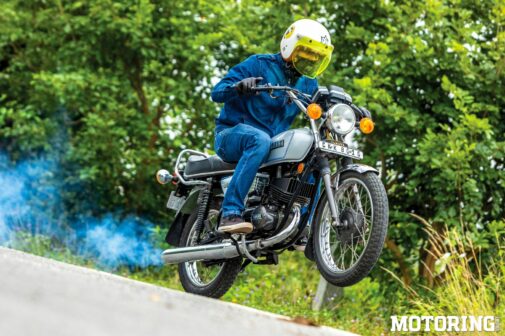
The RX was easily the most popular two-stroke of the lot. It carried middle-class aspirations and groceries around at 50 kph with a side box and a rear carrier to boot, and elsewhere turned into a speed-addicted axe murderer in the hands of its more performance-minded owners. It was probably this versatility that made it as popular as it was, though the machine’s feel itself was rather special, too. And I experience it first-hand every time I take out my RX. The barely-restrained violence contained in those rounded lines is easy to get hooked on to. And the combination of performance and simplicity somehow makes the RX seem more complete than the others, even if it lacks the equipment of the KB. It’s got that certain something that’s essential to make a motorcycle special.
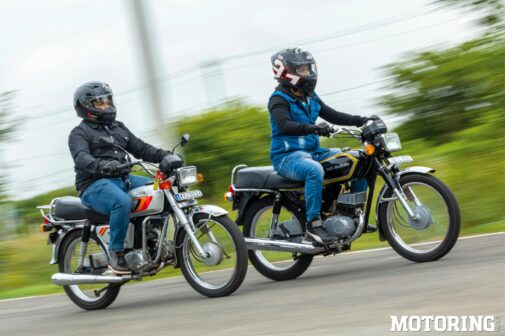
Today, each of these manufacturers are still around — but in unrecognisable ways. Kawasaki, somehow, maintains a foothold in India by selling big bikes (never mind the W 175… ). Bajaj makes KTMs and Triumphs, and has gone on to sell motorcycles in more than 70 countries. TVS makes some of the best Indian motorcycles and scooters around, while Suzuki’s limited existence revolves around two motorcycle engines, one for a scooter, and the Hayabusa. Yamaha still owns the hearts and minds of enthusiasts, though I believe it is yet to recreate the magic that the RX (and the RD 350) did. Hero has built its empire on the backs of machines spawned from the CD 100, and now makes the smallest Harley-Davidson as well (!). And Honda is chasing Hero down at a glacial but certain pace with its sterile lineup of eco-commuters and scooters. And these are all stories that began with these four motorcycles.
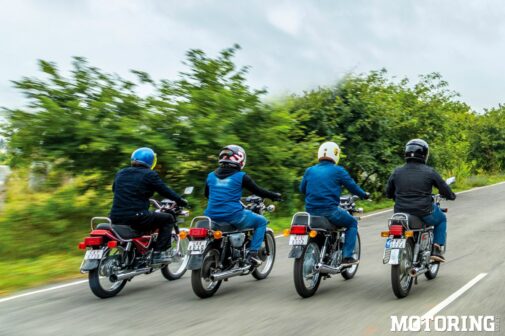
Torque spreads, acceleration numbers and top speeds were highly irrelevant on that day. This was only about finally bringing these motorcycles together to get a feel for them in each other’s company, and for a laugh. I wish I could spend a couple of weeks with them, trying to discover their natures in a modern context, and write a facetious road test about each one. They’re still light and efficient motorcycles that can deal with traffic better than most of their modern descendants. Perhaps one day, when I face the inevitable problem of finding the space for the other three bikes next to my RX.





